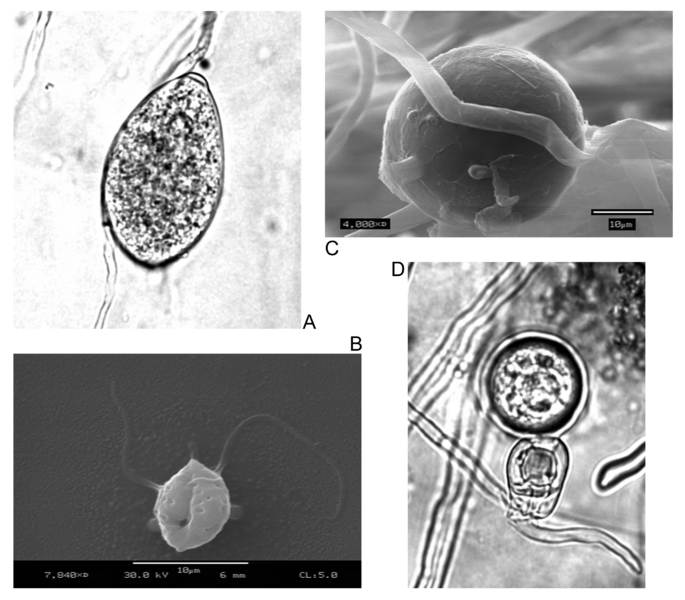What is Street Creatures? This is the game I run on Twitter every Friday. I’ve
collected all the past quizzes here in one place so you can either relive them, or play
them for the first time.
How does it work? Provided are four, seemingly unrelated clues, that are all
connected by a wild organism that can be found in a city. Look at the four clues,
do some research, and when you think you’ve figured it out, click on ‘Answer’
to reveal what connects the clues, and how they are connected.
Follow me on Twitter to play #StreetCreatures live every Friday at 9am PST.
Necrotroph
Hyphae
Great Famine
Salmon farm
Water Mold (Oomycete)

Reproductive Structures of the Phytophthora. The asexual (A) sporangia, (B) zoospores, and (C) chlamydospores, and the sexual (D) oospores.
Image source: Nicholls H: Stopping the Rot. PLoS Biol 2/7/2004: e213. https://dx.doi.org/10.1371/journal.pbio.0020213
This file is licensed under the Creative Commons Attribution 2.5 Generic license.
Necrotroph:
Many water molds are necrotrophs, meaning they are parasitic, killing their host and feeding on them.
Hyphae:
Although often mistaken for fungi, water mold is not a fungi. But like fungi, they do have hyphae which are a branching, filamentous structure.
Great Famine:
The potato famine in Ireland that lasted from 1845–49 was due to the water mold, Phytophthora infestans which was introduced from North America.
Salmon farm:
Water molds are well known to attack fish, creating lesions, but the problem is compounded in salmon farms where densities are high. One treatment is formalin-based products, now banned in Europe.


